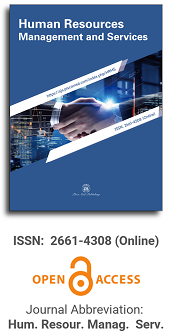Enhancing cross-cultural design competencies: Integrating knowledge, innovation, and ethics for human capital development in global markets
by Vuthipong Roadkasamsri, Peerapong Sensai, Kamjorn Saecheong, Apinya Anphanlam, Apiched Teekalee
Human Resources Management and Services
, Vol.7, No.4, 2025;
69 Views
This study investigates the core competencies essential for product designers to excel in cross-cultural global markets, with particular emphasis on implications for human resource development and organizational leadership. As design practices increasingly transcend cultural and geographical boundaries, designers are required to integrate advanced technical proficiency, creative problem-solving, technological adaptability, and cultural intelligence to create inclusive, socially responsible, and market-relevant products. Employing a mixed-methods approach—including focus groups and surveys with design professionals, industry executives, and academic leaders—the research identifies key competencies such as flexibility, intercultural communication, ethical integrity, and systems thinking. The findings underscore the necessity of balancing technical expertise with emotional intelligence and transformational leadership capabilities to effectively lead diverse, cross-functional teams. These competencies contribute significantly to fostering innovation, enhancing employee well-being and job satisfaction, and strengthening organizational resilience, thereby supporting sustainable human resource strategies. Furthermore, the study highlights the importance of continuous professional development and lifelong learning in cultivating culturally competent and ethically driven design talent. The insights offer strategic guidance for human resource professionals, organizational leaders, and educational institutions aiming to develop adaptive, inclusive, and future-ready design capabilities aligned with evolving global demands.



 Open Access
Open Access